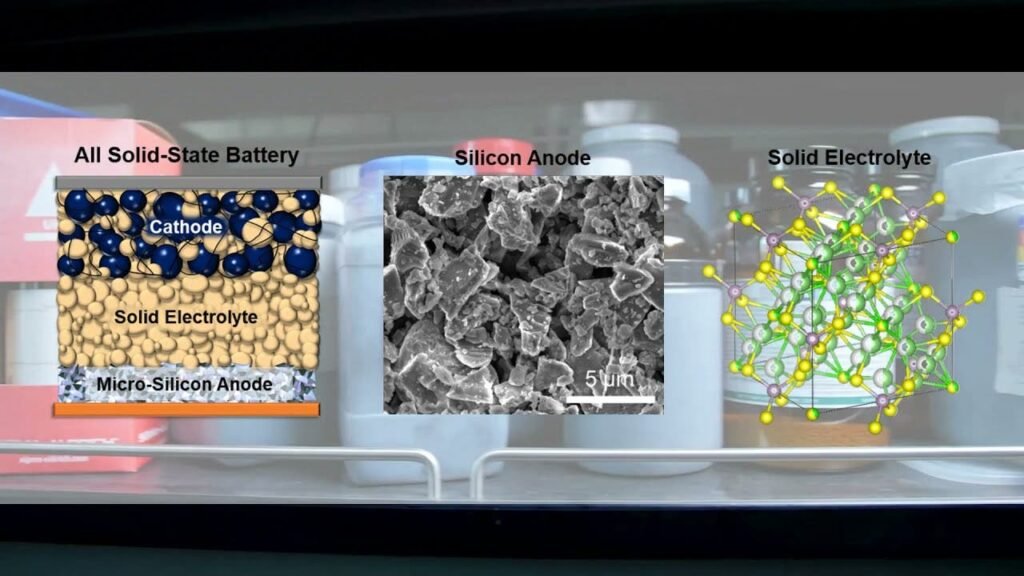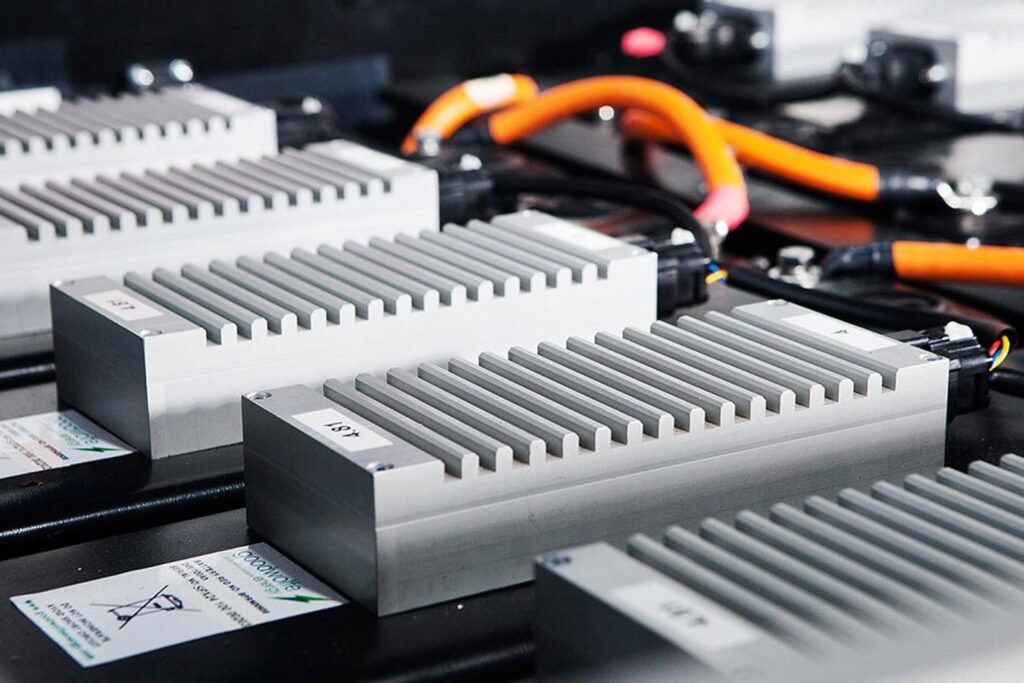By merging two possible battery sub-fields into a single cell, engineers have created a new type of battery. The battery contains a solid-state electrolyte and an all-silicon (Si) anode, resulting in a silicon all-solid-state battery.

1) The all solid-state battery consists of a cathode composite layer, a sulfide solid electrolyte layer, and a carbon free micro-silicon anode.
2) Before charging, discrete micro-scale Si particles make up the energy dense anode. During battery charging, positive Lithium ions move from the cathode to the anode, and a stable 2D interface is formed.
3) As more Lithium ions move into the anode, it reacts with micro-Si form interconnected Lithium-Si alloy (Li-Si) particles. The reaction continues to propagate throughout the electrode.
4) The reaction causes expansion and densification of the micro-Si particles, forming a dense Li-Si alloy electrode. The mechanical properties of the Li-Si alloy and the solid electrolyte have a crucial role in maintaining the integrity and contact along the 2D interfacial plane.
According to preliminary testing, the new battery is safe, long-lasting, and energy dense. It has the potential to be used in a variety of applications, ranging from grid storage to electric vehicles.
Silicon anodes are well-known for having a tenfold higher energy density than graphite anodes, which are often used in today’s commercial lithium ion batteries. Si anodes, on the other hand, are infamous for expanding and contracting as the battery charges and discharges, as well as deteriorating in the presence of liquid electrolytes.

Despite its appealing energy density, these challenges have precluded all-silicon anodes from being used in practical lithium ion batteries.
Efforts to commercialize silicon alloy anodes in the past have mostly focused on silicon-graphite composites or the combination of nano-structured particles with polymeric binders. However, they continue to battle with insecurity.

By replacing the liquid electrolyte with a solid electrolyte and eliminating the carbon and binders from the si anode, the researchers avoided a number of related issues that occur when anodes become saturated in the organic liquid electrolyte while the battery works.
Because of the proper electrolyte, this new battery chemistry provides a realistic path forward for all-silicon anodes.
Reference- “Carbon Free High Loading Silicon Anodes Enabled by Sulfide Solid Electrolytes,” in the Sept. 24, 2021 issue of Science; edited by Clean-Future Team






